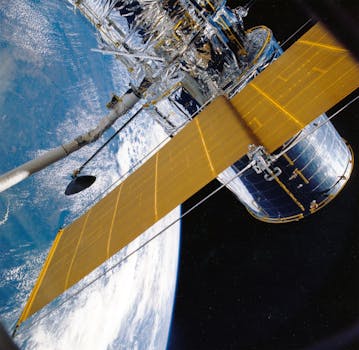From Geostationary to Low Earth Orbit: The Evolution of Satellite Telecommunications in 2023 – Satellite Telecommunications

From Geostationary to Low Earth Orbit: The Evolution of Satellite Telecommunications in 2023 – Satellite Telecommunications
Satellite Telecommunications has become an essential part of modern communication, enabling global connectivity and facilitating the exchange of vast amounts of data. The satellite telecommunications industry has undergone significant transformations in recent years, shifting from geostationary to low Earth orbit. This evolution has brought about numerous benefits, including faster data transfer rates, lower latency, and increased connectivity. In this article, we will delve into the history of satellite telecommunications, the advantages of low Earth orbit, and the current state of the industry.
The first commercial satellite, Intelsat 1, was launched in 1965 and operated in geostationary orbit, approximately 36,000 kilometers above the Earth’s equator. Geostationary satellites remained the dominant force in the industry for decades, providing telecommunications services to remote and underserved areas. However, geostationary satellites have several limitations, including high latency and limited bandwidth. The round-trip signal delay from the Earth to a geostationary satellite and back can be up to 250 milliseconds, which can be detrimental to real-time applications such as video conferencing and online gaming.
In recent years, the industry has shifted towards low Earth orbit (LEO) satellites, which operate at an altitude of approximately 160 to 2,000 kilometers. LEO satellites have several advantages over geostationary satellites, including lower latency, faster data transfer rates, and increased connectivity. The lower altitude of LEO satellites reduces the round-trip signal delay to around 20-30 milliseconds, making them ideal for real-time applications. Additionally, LEO satellites can provide higher bandwidth and faster data transfer rates, enabling the transmission of large amounts of data, such as high-definition video and images.
The Advantages of Low Earth Orbit
The advantages of low Earth orbit satellites are numerous. One of the primary benefits is the reduced latency, which enables real-time applications such as video conferencing, online gaming, and virtual reality. LEO satellites also provide faster data transfer rates, enabling the transmission of large amounts of data, such as high-definition video and images. Furthermore, LEO satellites can provide increased connectivity, particularly in remote and underserved areas, where traditional fiber-optic cables and cellular networks are not available.
Another significant advantage of LEO satellites is the reduced cost of launch and operation. LEO satellites are smaller and lighter than geostationary satellites, which reduces the cost of launch and operation. Additionally, LEO satellites can be launched into orbit using smaller and more efficient launch vehicles, further reducing costs. The reduced cost of launch and operation enables companies to launch constellations of LEO satellites, providing global coverage and increasing connectivity.
The Current State of the Industry
The current state of the satellite telecommunications industry is one of rapid growth and transformation. Several companies, including SpaceX, OneWeb, and Amazon’s Kuiper Systems, are launching constellations of LEO satellites to provide global coverage and increased connectivity. These constellations will enable the transmission of large amounts of data, such as high-definition video and images, and provide real-time applications such as video conferencing and online gaming.
In conclusion, the evolution of satellite telecommunications from geostationary to low Earth orbit has brought about numerous benefits, including faster data transfer rates, lower latency, and increased connectivity. The advantages of low Earth orbit satellites, including reduced latency, faster data transfer rates, and increased connectivity, have made them an attractive option for companies and individuals alike. As the industry continues to grow and transform, we can expect to see significant advancements in satellite telecommunications, enabling global connectivity and facilitating the exchange of vast amounts of data.




